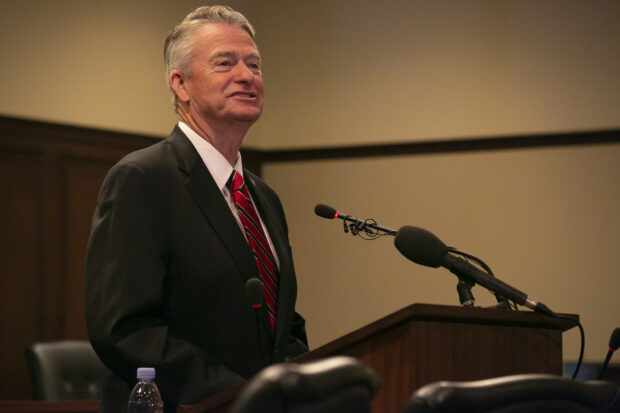Idaho revenues beat the forecast by $37 million last month, providing some welcome breathing room in the budget — at least for now.
Two months into the budget year that began July 1, revenues are already more than $69 million ahead of projections, according to reports released Tuesday by the Legislative Services Office and the Division of Financial Management.
It’s early, but if the trend holds, Idaho could be looking at a year-end balance of $500 million.
The revenue report, which often comes and goes unceremoniously every 30 days, was such good news that Gov. Brad Little put out a news release about it.
Little said the report shows that Idahoans are getting back to work and engaging in the economy.

“We’re far better off in Idaho than elsewhere, thanks to our handling of the pandemic and fiscal conservatism in state government — our management of the state budget and watchful eye on regulations,” Little said in a written statement. “We are well positioned to handle the ongoing impacts of COVID-19.”
Revenues provide the building blocks of the state budget. Public schools are Idaho’s largest general fund expense every year, often accounting for nearly half of spending.
Bottom line, the report shows the budget is in a better shape than it was a month ago.

“It’s a great position to be. It’s an optimistic position to be in, and would I call our read on it ‘cautious optimism,’’’ Division of Financial Management Administrator Alex Adams said.
Even with the good news, budget officials said patience and context are important.
Ten months remain in the budget year, and state officials don’t know what will happen with flu season or the ongoing coronavirus pandemic, Adams said.
A 5 percent budget holdback remains in place for all state budgets, including education.
By the end of December, officials will have enough data to issue a new forecast that Little will build into his 2021-22 budget recommendations, Adams said.
“You will see us continue to approach the budget with cautious optimism,” Adams said. “I think you will see the governor take all of that into account in the budget he delivers in January.”
State Superintendent of Public Instruction Sherri Ybarra submitted her 2021-22 budget request last week. She’s asking for a 1.5 percent increase in spending compared to this year’s original budget, and hopes to unfreeze teacher pay.
Little said state agencies submitted their lowest budget requests in years, seeking overall growth of about 1.7 percent.
The state’s three largest revenue sources are all taxes — individual income tax, corporate income tax and sales tax.
Revenue collections for all three are up compared to the same time a year ago.
